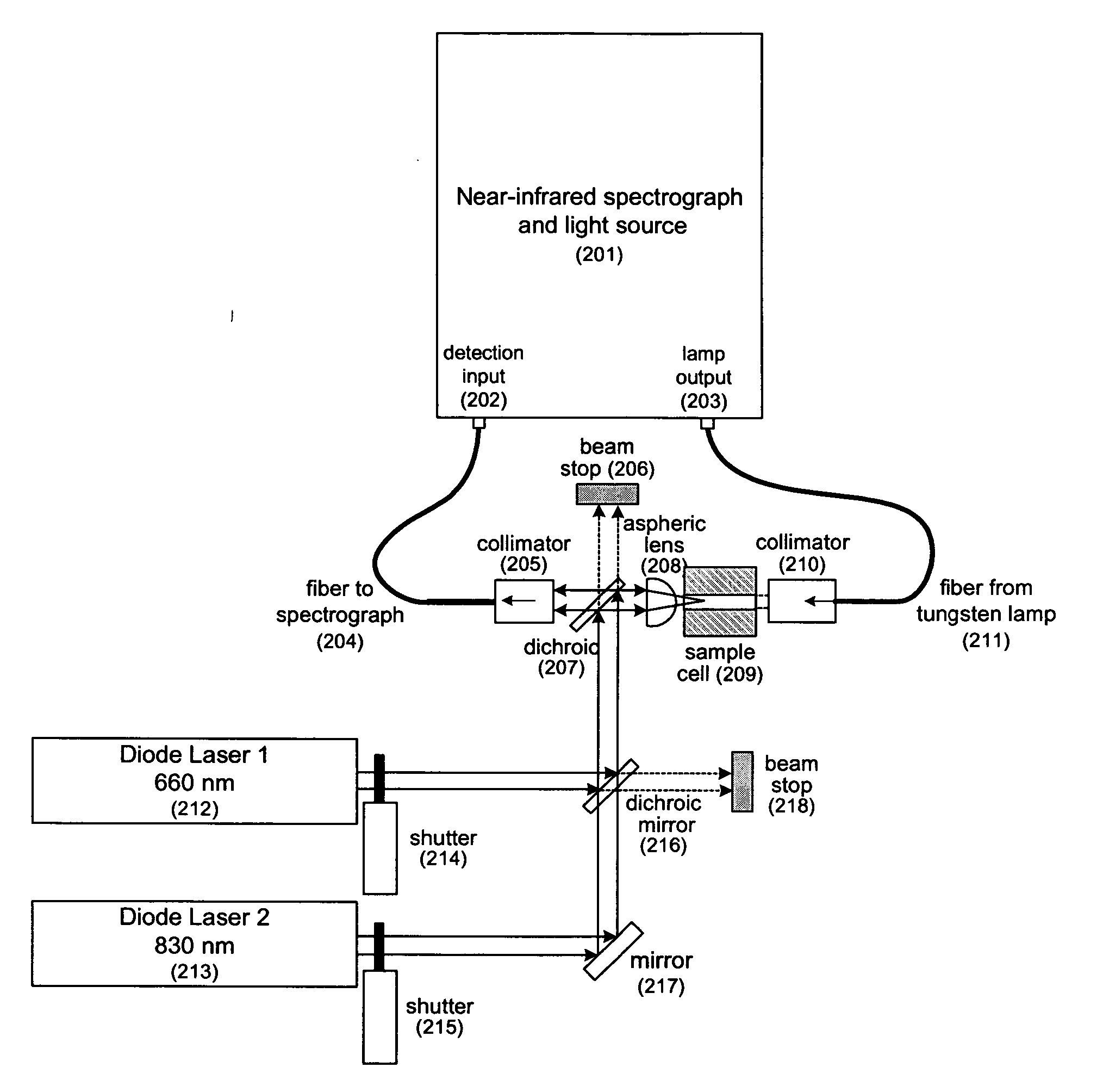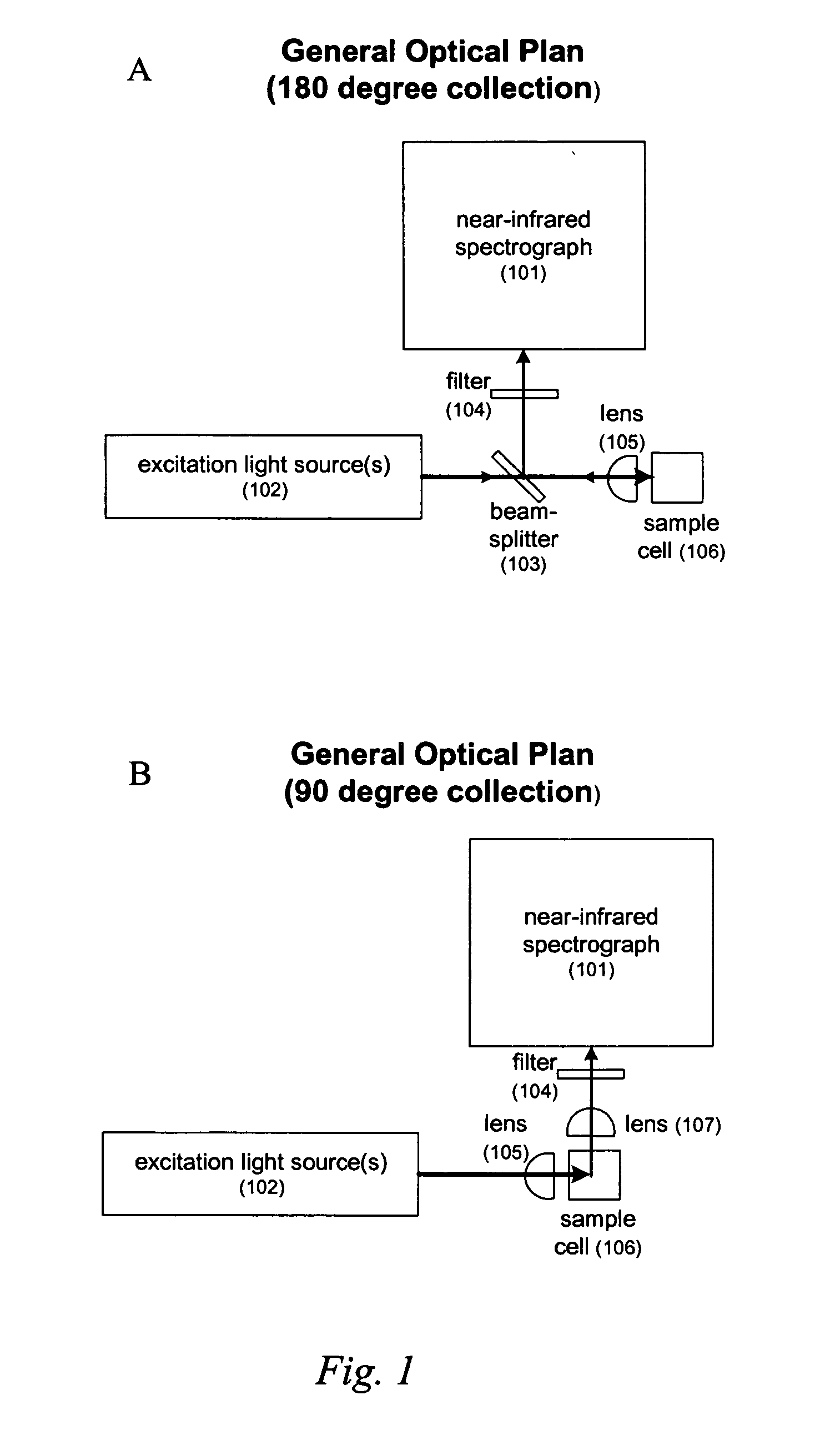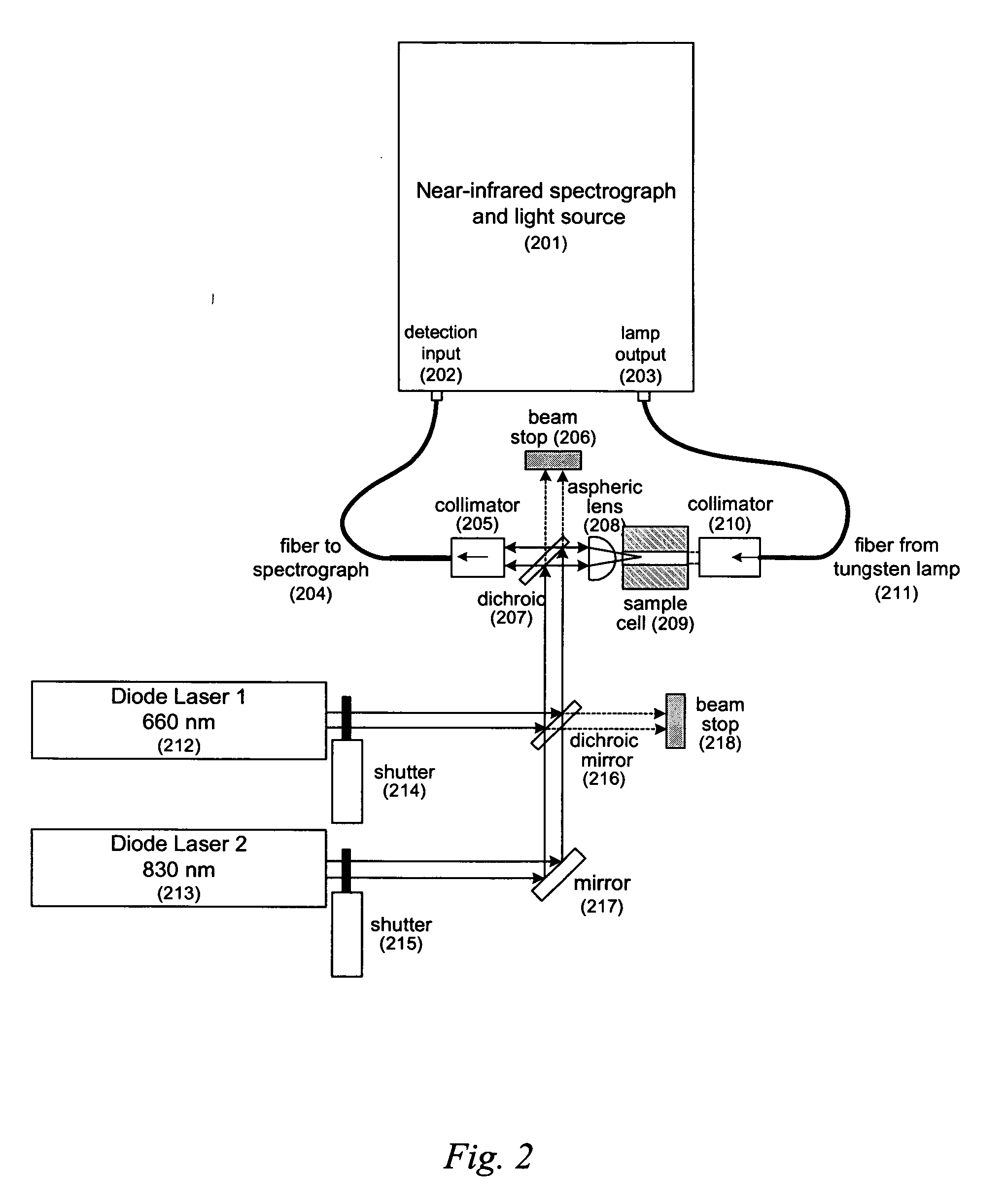Efficient fluorimetric analyzer for single-walled carbon nanotubes
- Summary
- Abstract
- Description
- Claims
- Application Information
AI Technical Summary
Benefits of technology
Problems solved by technology
Method used
Image
Examples
example 1
[0030] This example serves to illustrate a specific device configuration useful in the compositional analysis of SWNT samples, according to one or more embodiments of the present invention.
[0031] Two excitation sources irradiate the sample sequentially, with their beams controlled by automated optical shutters. Referring to FIG. 2, these sources are diode lasers 212 and 213 emitting at approximately 660 and 830 nm, respectively. Appropriate dichroic mirrors 216 and 207 reflect the excitation beams into a rectangular sample cell through an aspheric lens 208 of focal length approximately 5 mm. This lens also collects and collimates some of the fluorescence light from the nanotube sample and directs it through a near-infrared transmitting dichroic mirror 207. The fluorescence light is then focused into a multi-mode fiber optic 204 by a collimating lens 205. The fiber optic leads to the entrance slit (detection input 202) of a near-infrared grating spectrograph 201 that has a multichan...
example 2
[0033] This example serves to illustrate a manner in which a SWNT sample can be analyzed by the device described in Example 1.
[0034] A small solid sample (212 (typically ca. 660 nm) is reflected from specialized dichroic mirrors 207 and 216 and focused into the sample cell 209 by an aspherical short focal length lens 208 (ca. 4 mm) to optically excite the nanotubes. A portion of the resulting near-infrared fluorescence is captured by the same lens 208 and directed back toward the dichroic mirror 207 through which it is transmitted. Using collimator 205, this light is then focused into the end of a multimode optical fiber 204 chosen for high transmittance in the near-infrared. The fiber delivers the fluorescence light to the input 202 of a spectrograph / InGaAs photodiode array 201 designed to disperse and detect light in the wavelength range typical of SWNT emission. A control computer records this emission spectrum. The excitation light is then blocked and a broadband near-infrared ...
example 3
[0036] This example serves to illustrate a manner in which the computational analysis of the spectral profiles of the SWNT samples can be accomplished.
[0037] The raw emission spectrum (obtained from a device such as that shown in FIG. 2) is transmitted to a controlling computer and then analyzed using custom-written software routines. In this process, the intensities are first corrected for wavelength-dependent variations in the instrument's sensitivity, using a pre-determined response function. The corrected spectrum is transformed from a wavelength scale to an optical frequency scale. Using tabulated, pre-calculated emission profiles for a wide range of nanotube species (see Table 1), the corrected and transformed emission spectrum is simulated (in an iterative nonlinear least-squares fitting process) as a superposition of such profiles. The simulation result gives a set of amplitudes for the various nanotube species. These amplitudes are then multiplied by predetermined sensitiv...
PUM
 Login to View More
Login to View More Abstract
Description
Claims
Application Information
 Login to View More
Login to View More - R&D
- Intellectual Property
- Life Sciences
- Materials
- Tech Scout
- Unparalleled Data Quality
- Higher Quality Content
- 60% Fewer Hallucinations
Browse by: Latest US Patents, China's latest patents, Technical Efficacy Thesaurus, Application Domain, Technology Topic, Popular Technical Reports.
© 2025 PatSnap. All rights reserved.Legal|Privacy policy|Modern Slavery Act Transparency Statement|Sitemap|About US| Contact US: help@patsnap.com



